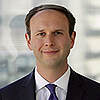There has been a lot of innovation in asset allocation and portfolio construction over the years, including efforts to enhance diversification without sacrificing returns. Fixed income portfolios have been a particular area of focus, with market headwinds and allocators’ shifting objectives driving interest in the use of hedge funds as a partial substitute for traditional fixed income allocations.
A common solution has been to build a multi-manager hedge fund portfolio with bond-like volatility and minimal correlation to equities. But we see pitfalls in this approach. For example, volatility and correlation levels are often conditional on the market regime, and therefore unstable and unreliable when targeting a specific outcome. In addition, allocators constructing such a portfolio often focus on how to weight various categories of hedge fund strategies (e.g., Macro and Relative Value) in order to navigate certain market environments. But we have found that the behavioral profiles of hedge fund categories have been more similar than not in recent years, suggesting that a portfolio structured in this way may be less diversified than it appears.
In this paper, we propose an alternative approach for analyzing hedge funds and constructing multi-manager hedge fund portfolios intended to stand in for fixed income. As factor-based manager researchers and allocators, we believe a style-factor lens can help allocators understand the biases of their managers and define the desired roles of their investments. Here we use that lens to help capture the roles of a fixed income allocation and build portfolios of hedge funds that are more connected to those roles and the desired outcome. Among our key conclusions:
- A role-based framework can help better align manager research, portfolio construction, and potential investment outcomes.
- Decisions about allocations to individual hedge funds can have a greater impact on the role and behavioral profile of a multi-manager portfolio than decisions about how to weight different hedge fund categories.
- As a result of the unconstrained nature of hedge funds and the tool kit at their disposal, they can potentially be used to build targeted outcome-oriented solutions such as a fixed income substitute portfolio designed for different interest-rate environments.














